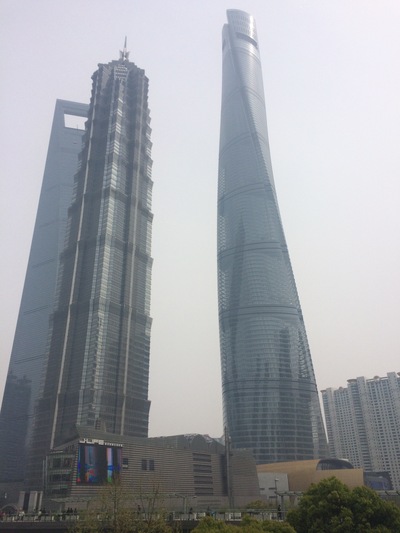- Numerous companies and sectors are struggling in China and Hong Kong despite renewed political stability and consistent economic growth figures.
- Management teams have reacted to declining revenues in two broad ways: acceptance or adaptation.
- Seafarer views those companies willing to experiment and adapt their approaches amidst such a slowdown to be more likely to benefit in an uncertain economic future, as consumer preferences evolve.
Walking to a corporate meeting through the streets of Hong Kong recently, I recalled the student protests of late 2014 (see my Field Note from Hong Kong at that time). More than a year after Beijing successfully dissolved the protests in December 2014, the buzz of commuter traffic has replaced the silent tension of the demonstrations. Things are back to normal in Hong Kong. As for mainland China, the government achieved another success by delivering uncannily consistent gross domestic product (GDP) figures. From Beijing’s perspective, stability prevails. Or does it?
The primary takeaway of my most recent trip back to the country is that change is afoot. The feedback from my company meetings highlights how irrelevant GDP growth figures are to investment returns. Indeed, there are companies and sectors in China that are already going through a revenue or profit recession, irrespective of what GDP growth figures might suggest.
The management response to this pervasive downturn in Chinese corporate profits is what I focused on during my meetings and highlighted the area of differentiation between companies. I found two approaches to the challenge. One common response was to view the sales slowdown or decline as part of a normal cycle that called for management to lower costs, preserve balance sheet liquidity, and wait for the upturn.
The second approach, employed only by a minority of the companies I met with, was to adapt their operations. This adaptation stems from the interpretation of the slowdown as more than just part of the cycle, but as a change in customer preferences as well. These companies focused on changing their processes and on product innovation. While it can be a vague and overused term, “product innovation” for these companies is more than simply releasing a new version of an existing product. For example, a food company we met with invested significant sums in new processing facilities that employ novel processes for China, and manufacture a new category of meat product not previously in existence. Another example is a packaging company that is considering developing its own equipment to produce novel packaging solutions with proprietary patents.
While there is no guarantee that these initiatives will prove commercially successful, and thus there is no guarantee that a potential investment in these companies will yield a return, I do think the second group of companies stands a much better chance of successfully navigating an uncertain future than those simply waiting for a reacceleration of demand. Furthermore, I agree with the assessment that the slowdown in Chinese corporate profits – in spite of what GDP figures might otherwise suggest – is indicative of changing preferences, not simply slower spending growth. Indeed, taking one step from the micro to the macro, one could generalize that in the case of Chinese consumer companies, the era of easy growth by simply expanding geographic coverage to second and third-tier cities is likely over. Equally, the voracious demand for consumer products that had once been scarce has been met to the point that growth increasingly hinges on innovation.
My meetings with Chinese state-owned enterprises (SOEs) revealed a lack of clarity regarding how to respond to the apparent change in demand preferences. One regional conglomerate with a mix of strong and poorly performing assets, felt no compulsion to make changes and contented itself with increasing leverage to survive over the lean years. Rather than reform the existing asset base, this particular enterprise was simply pursuing new thematic investments based on indications from Beijing. Another very large conglomerate I met with planned a more proactive approach to restructuring its portfolio of assets, but there was an apparent lack of vision. Each strategic initiative or capital raising was incremental in nature designed to address a specific short-term pressure. To the extent that one may draw conclusions from these bottom-up data points, there appears to be a distinct lack of clarity on the way forward within the state sector.
What my most recent trip to China proved is that delivering consistent GDP growth figures does not address corporate profit pressure, at least among the companies that Seafarer visited. By extension, solid GDP growth does not address Beijing’s traditional concern with stability. To be fair, the government has implemented initiatives other than targeting GDP. It has forcefully countered corruption and several SOEs have added employees and outside strategic investors to their shareholder bases. While these initiatives may improve the incentive structure going forward, they fail to address how corporates will adapt to a profit pressure that seems decoupled from GDP growth. I expect stock selection to assume greater importance in delivering investment returns in China going forward than may have been the case in the past.
Paul EspinosaBeijing

Shenyang

Shenzhen


Shanghai

- The views and information discussed in this commentary are as of the date of publication, are subject to change, and may not reflect the writer's current views. The views expressed represent an assessment of market conditions at a specific point in time, are opinions only and should not be relied upon as investment advice regarding a particular investment or markets in general. Such information does not constitute a recommendation to buy or sell specific securities or investment vehicles. It should not be assumed that any investment will be profitable or will equal the performance of the portfolios or any securities or any sectors mentioned herein. The subject matter contained herein has been derived from several sources believed to be reliable and accurate at the time of compilation. Seafarer does not accept any liability for losses either direct or consequential caused by the use of this information.
![[Chrome]](/_layout/images/ua/chrome.png)
![[Firefox]](/_layout/images/ua/firefox.png)
![[Opera]](/_layout/images/ua/opera.png)
![[Microsoft Edge]](/_layout/images/ua/edge.png)